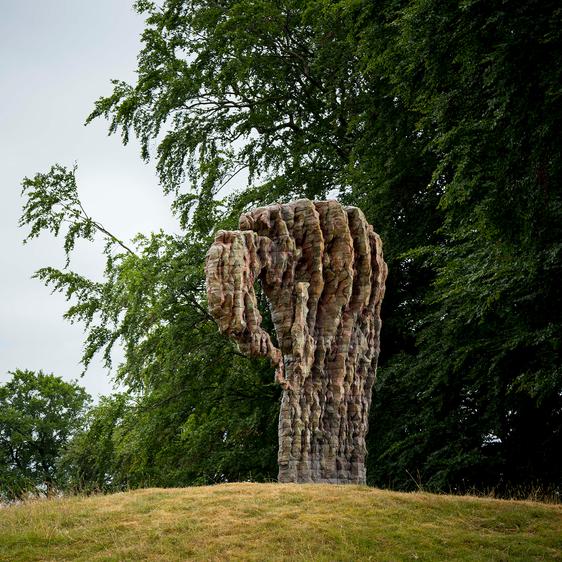Katrina Palmer: The Coffin Jump
Art Outdoors /Katrina Palmer: The Coffin Jump
The Coffin Jump was created at YSP in 2018 as part of the 14-18 NOW arts programme for the First World War centenary. Katrina Palmer was awarded the commission to create an artwork and she took inspiration from the role of women during the war, and in particularly the all-female First Aid Nursing Yeomanry (FANY). Founded in 1907 and originally intended to be on horseback, the FANY rescued wounded men directly from the battlefields, linking the front line with the field hospitals.
The installation combines sculpture, sound and performance, and symbolises the new freedoms afforded to women in the war. The performance aspect of The Coffin Jump occurs sporadically and involves a horse and rider galloping through the Park and making the leap over the work, which is also a fully size horse jump.
The text painted on the jump is a response to the diaries of the nurses, including that of Muriel Thompson, a Scottish motor racer and suffragette who joined the FANY in 1915 as an ambulance driver.
Read about the role of the FANY in The Independent
Find out more about the FANY
A very special thanks to all those whose support has enabled this commission: Art Fund, Sir David Verey, 14 – 18 NOW, The Henry Moore Foundation, The Clothworkers’ Company, along with Melanie Gee, Larissa Joy, Midge & Simon Palley, Nicholas & Jane Ferguson and Tony McCallum.

You might also like
- Art Outdoors

Henry Moore: Upright Motives No. 1 (Glenkiln Cross): No 2; No 7
Moore created twelve Upright Motives in the mid 1950s. In their powerful symbolism these pieces owe much to the tall, upright stones, known as menhirs, from prehistoric times. Moore brought all these influences together to create forms which are unmistakably his own. - Art Outdoors

Ursula von Rydingsvard: Heart in Hand
Heart in Hand relates to an earlier, larger work called Luba that was made in cedar and bronze, and is on permanent display at Storm King Art Center in upstate New York. Both works are intended to suggest a sense of protection and nurturing, like the arm of a mother cradling a baby. - Art Outdoors

Andy Goldsworthy: Shadow Stone Fold
- Art Outdoors

Henry Moore: Large Totem Head
This sculpture is enlarged from a much smaller work made five years previously called Head: Boat Form and the resemblance to a hollowed-out boat remains clear. However, unlike that sculpture, which sat horizontally, Large Totem Head is raised to a standing form, assuming the totem-like presence of its title.